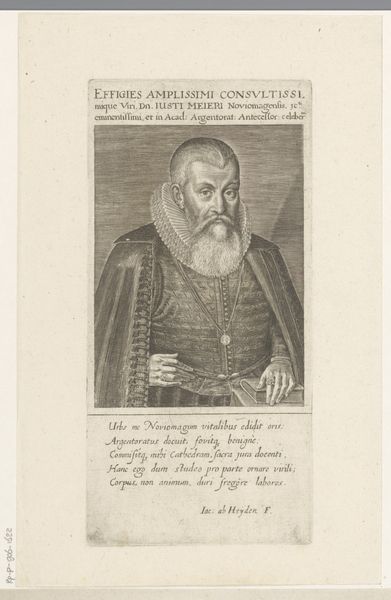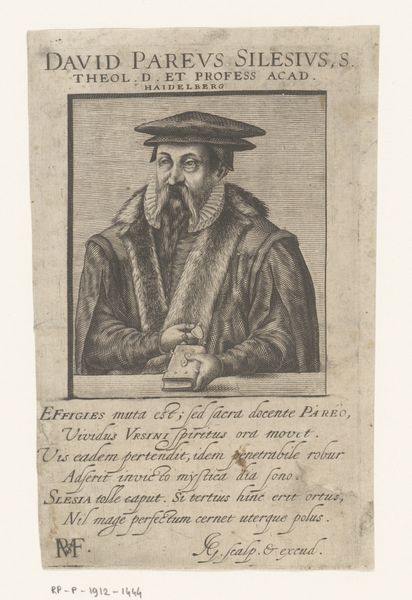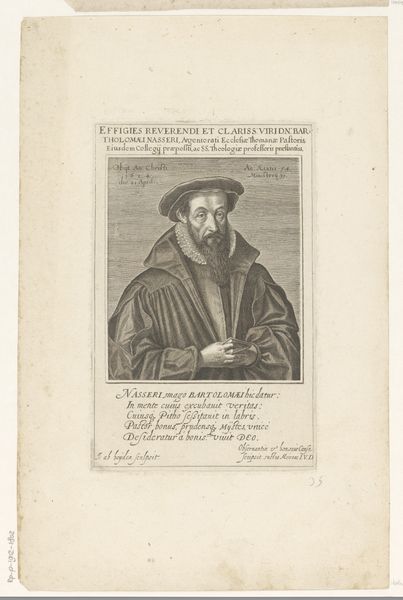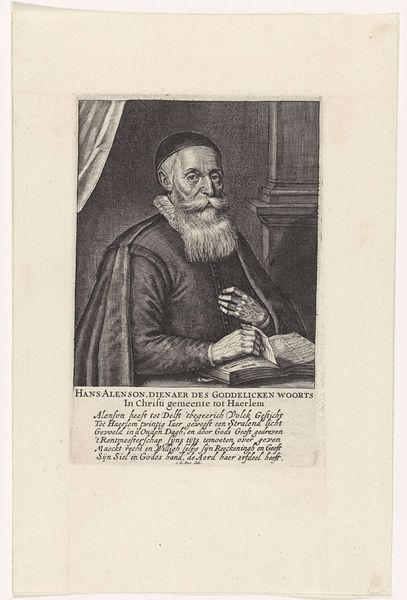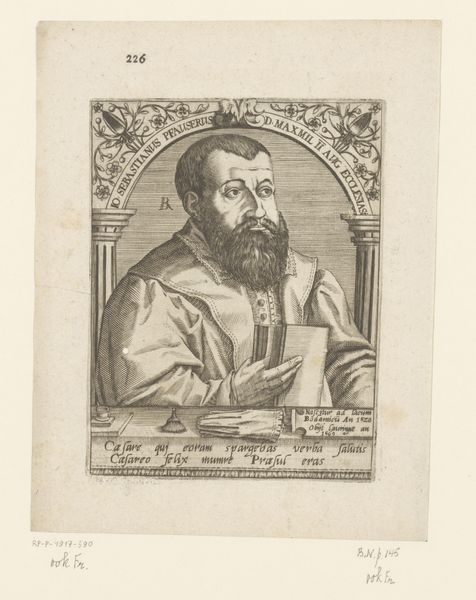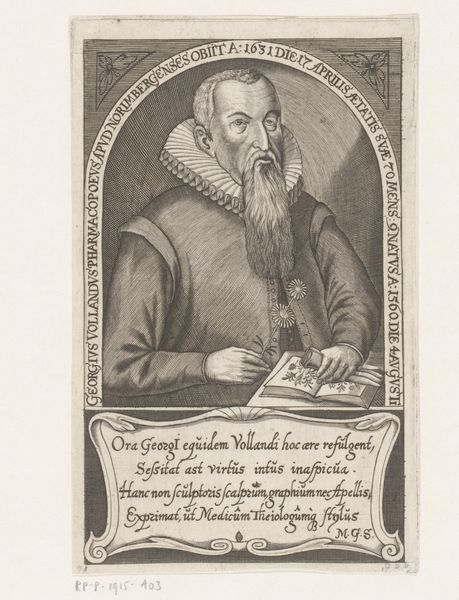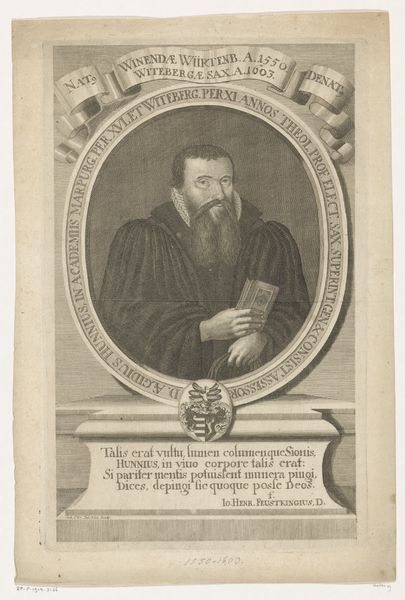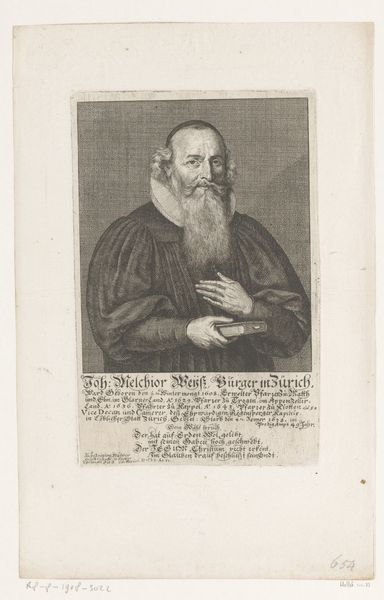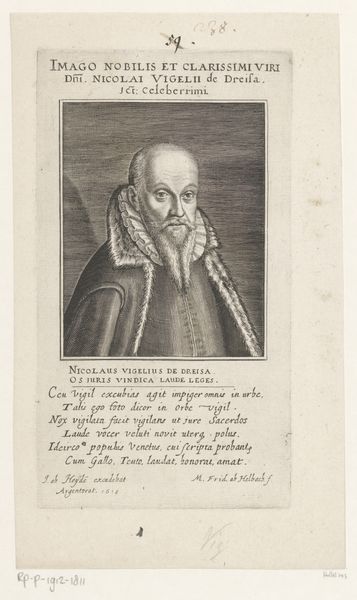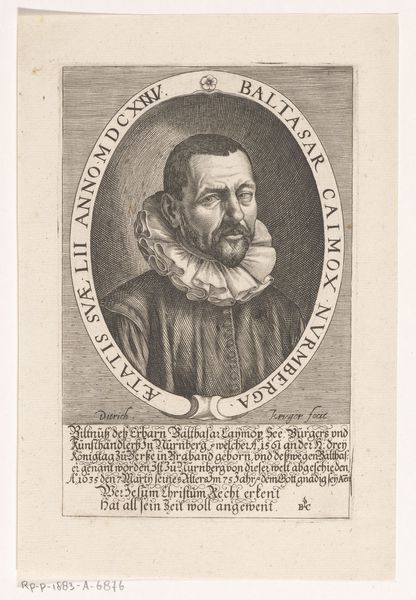
engraving
#
portrait
#
baroque
#
history-painting
#
northern-renaissance
#
engraving
Dimensions: height 184 mm, width 99 mm
Copyright: Rijks Museum: Open Domain
Editor: So, here we have "Portrait of Johann Sturm," made sometime between 1583 and 1645 by Jacob van der Heyden, it looks like it was created using engraving. The detail is impressive, particularly the text above and below the subject. What do you see in this piece? Curator: As a materialist, I’m immediately drawn to the process of engraving. Think about the labour involved, the repetitive actions of incising lines into the metal plate. Consider how the means of production here—the burin, the ink, the printing press—democratize access to Sturm’s image. This wasn’t a unique painted portrait for a wealthy patron. Editor: That’s a great point. It shifts the focus away from just the subject to how the portrait was actually created and circulated. Did the act of making multiple copies impact its reception at the time? Curator: Precisely! We need to understand the social context of printmaking in this era. Who was consuming these images? Were they academics, students, or a broader public? Each impression bears witness to this consumption, raising complex questions about art, labor, and the accessibility of knowledge in Sturm’s era. We can also analyze the varying uses of pressure when using the engraving tool. See, for instance, where he might have started and stopped a groove and built it back. You can follow the means of his production of labor! Editor: So, understanding the 'how' it was made, as much as the 'who' is depicted, changes our appreciation. Curator: Absolutely. By looking at the materials, the labour, and the circulation of the print, we get a far richer understanding of the work and its significance. It goes beyond just a representation of a historical figure.
Comments
No comments
Be the first to comment and join the conversation on the ultimate creative platform.
